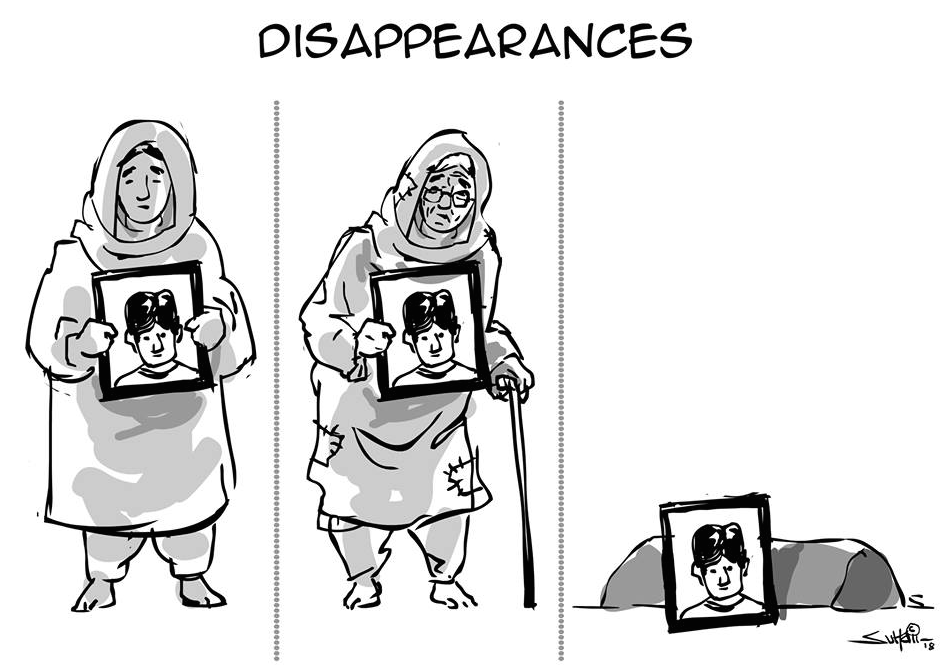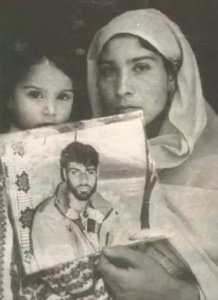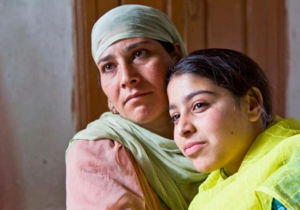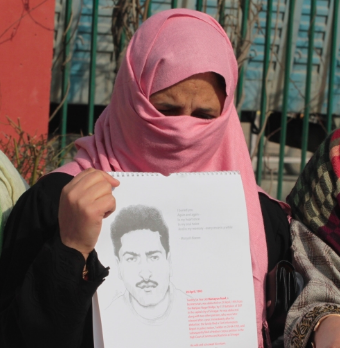Stories of the disappeared in Kashmir.
Srinagar, Kashmir, September 18, 2021.

Enforced disappearances in Kashmir. Graphic by Suhail Naqshbandi.
India has subjected 8,000 to 10,000 Kashmiris to enforced disappearances in Indian-occupied Kashmir. Under India’s occupation and ongoing settler colonialism of Kashmir, enforced disappearances have been used as a tool to suppress Kashmiris and their resistance against India.
Below, are three stories of these systemic & systematic disappearances in Kashmir.
1.) Rafiqa.
Rafiqa recalls vividly the night her husband, Mushtaq Ahmad Khan, disappeared. It was in 1997 and she was pregnant with Farzana. They were fast asleep when uniformed soldiers from the Indian Security Force broke into her home and seized him. When she tried to stop them, one of the soldiers shoved her out of the way and threatened to shoot her. Their three older sons witnessed the whole ordeal.”
After Mushtaq was taken into custody by Indian armed forces, he was never seen or heard from again. Rafiqa has been working to support herself, her four children and her mother-in-law.

Photo by APDP.

Photo by Nadia Nurmukhamametova.
2.) Mumtaza.
Mumtaza Bano, 16, a high-school student, was abducted by the Indian army on June 4, 2000, from her home in Dhar village, in Doda, Kashmir.
“At 11 pm, the sounds of jackboots rented the air. We didn’t open the door, they barged in from the window after breaking the iron grills & started dragging my daughter. Me and my daughter Farida caught her legs, so that they can’t pull her out. But our strength was outnumbered in front of their strength.” Recalls Zoona Begum, Mumtaza’s mother.
Story via KashmirLit.

Photo from Kashmir Lit.
3.) Safiya.
A “half-widow” , a term specifically for women whose husbands have disappeared, Safiya was married for two years before Humayan went missing. On that day, a neighbour told Safiya that her partner had been taken away. “After that, we never saw him.”
She clung to hope when some prisoners said they saw her husband in an infamous interrogation centre in Srinagar known as Papa 1. “It elevated my hope that he was alive. I went to the torture centre every day. I sat there from morning to evening. I would take grapes for him or something else and hand it over to the security guards at the gate to give him. But I never got a glimpse of him,” said Safiya.
I even saved a half-burned cigarette that he had smoked on the morning of his disappearance. Until a few years ago, his clothes remained hanging in the wardrobe. With me, everything at home waited for him,” she said.
Story via Aljazeera.

Photo from Aljazeera.
Stand With Kashmir (SWK) is a Kashmiri diaspora-driven independent, transnational, grassroots movement committed to standing in solidarity with the people of Indian occupied Kashmir in ending the Indian occupation of their homeland and supporting the right to self-determination of the pre-partition state of Jammu and Kashmir. We want to hear from you. If you have general inquiries, suggestions, or concerns, please email us at info@standwithkashmir.org.
©2025 StandWithKashmir All rights reserved. SWK is a 501(c)(3) non-for-profit organization.


Leave a Reply